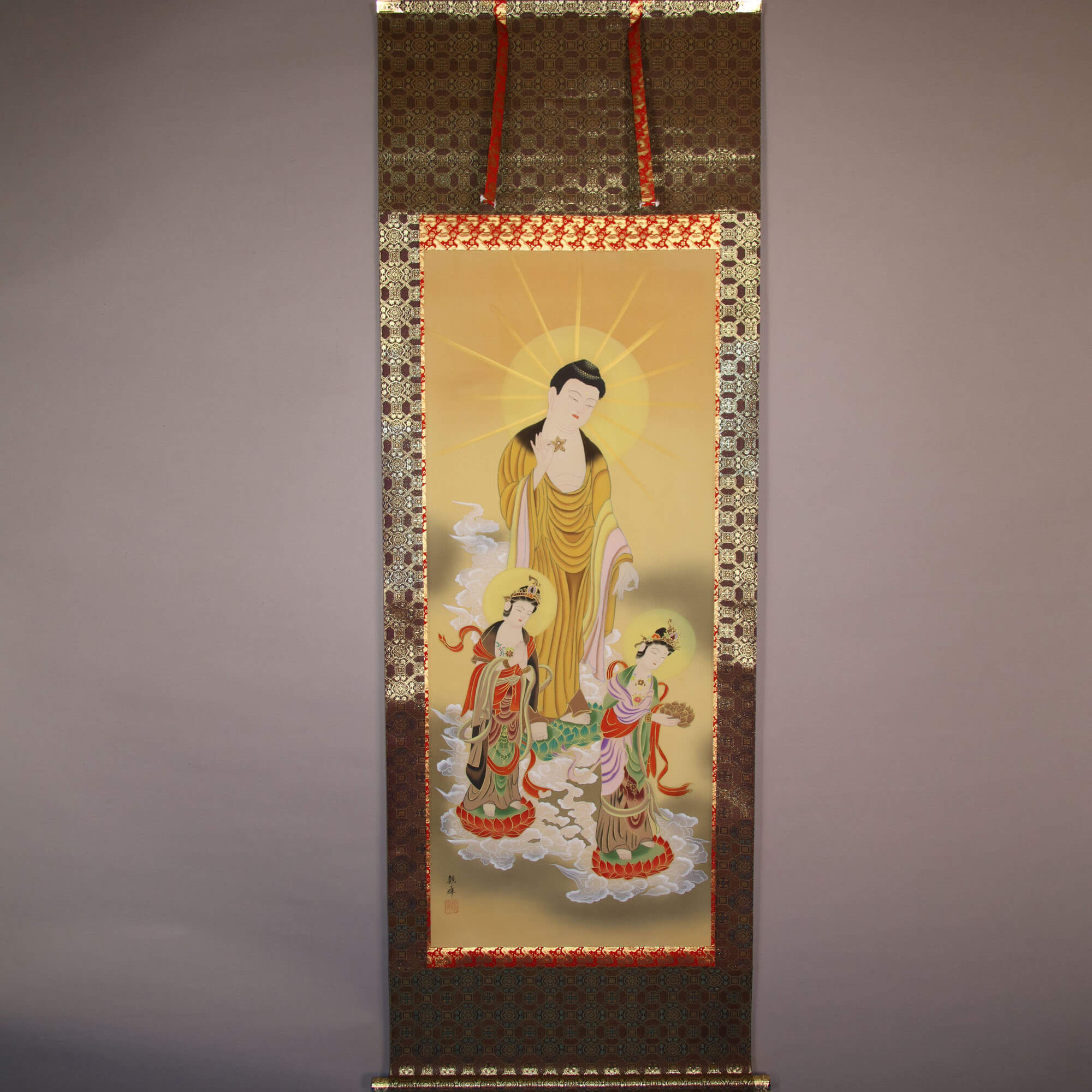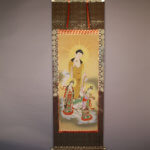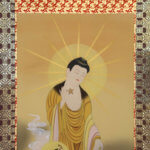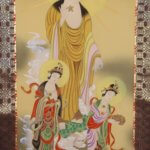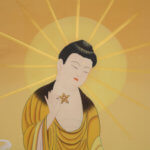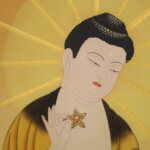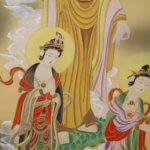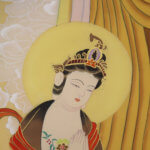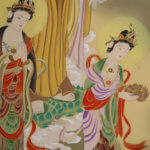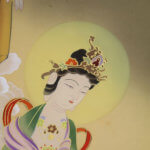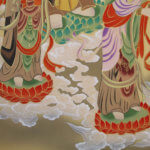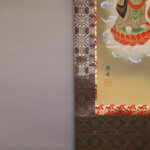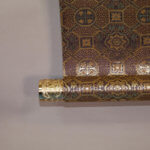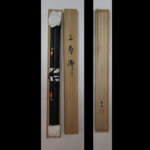Kakejiku Hanging Scroll: Amitabha Triad / Kawamura Kanpō - Amida Sanzonbutsu
- Product ID
- B0085
- Name
- Kawamura Kanpō
- Profile
A Japanese-style painter. In 1935, born in Aichi pref. Member of the Tōyō Bijutsukai. Pupil of Ōhashi Suiseki. A frequent prize winner. Specialized in Buddhist paintings, landscape paintings, and animal paintings.
- Size
- 695mm x 1860mm
- Roller End Material
- Golden
- Material of the Work
- Silk
- Price
- JPY 50,000
- Stock Condition
- In stock
- Payment: Click the Paypal Mark
- Duty and Taxes
Import duty and taxes are beyond our control and may apply to your shipment. Please noted that these fees are the responsibility of the buyer.
- Description
Pure Land Buddhism, a belief to pray for the descent of Amitabha Tathagata was originated in Amitayurdhyana Sutra and brought to Japan from China in the Nara era. It was in the Heian era, when Genshin, a monk of the Tendai sect, compiled Ōjōyōshū, The Essentials of Rebirth in the Pure Land, in 985, that Pure Land Buddhism became truly influential in medieval Japanese society. The most typical manifestations of its influence remain as Byōdō-in-Hō-oh-dō (The Phenix Hall at Temple of Equality), a statue of Amitabha, and Kuhon Raigo-zu (the Paintings of the Nine Stages of Amitabha’s Welcoming Descent) on its wall. In the Kamakura era, more and more paintings of Amitabha’s descent were made and brought to Buddhist memorial services at temples and to one’s deathbed. And in order to pray for the descent of Amitabha on a daily basis, smaller versions of the painting of Amitabha Triad’s descent were also created.
In this painting, Kawamura Kanpō portrays a golden Amitabha Tathagata descending to earth on auspicious clouds, accompanied by Avalokiteshvara holding a lotus pedestal and Mahasthamaprapta putting hands together in prayer. The positioning of Amitabha gazing down at the lower right and his attendants, is dynamic and leaves a great impact on believers. This is a masterpiece that depicts the sublime Amitabha triad mercifully lighting the fire in the heart of people.

